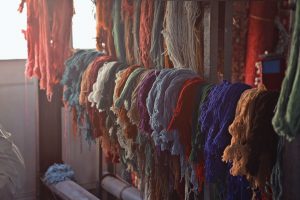The word sustainable is a trendy buzzword. We hear it; we see it almost everywhere: sustainable architecture, sustainable agriculture, sustainable energy, sustainable living, sustainable business, sustainable development etc. Here comes a sustainable fashion! Not just trendy but an essential topic worth exploring and understanding from the ground up. I am not an expert on this topic by any means; however, I am a person who is very fond of fashion, humanism, and the preservation of nature for our children and future generations to come. Sustainable fashion is an extensive topic, so I suggest this acquaintance trip start with good prep work and establish what is what.
In general, sustainability focuses on addressing current needs without jeopardising future generations’ ability to fulfil their own. The three pillars of sustainability are economic, environmental, and social—also known as profits, earth, and people informally. Sustainability motivates companies to think about their actions in terms of long-term social, human and environmental effects rather than quick financial returns.
Clothing made, marketed, and worn in an environmentally friendly manner is referred to as sustainable fashion. Environmental and socio-economic aspects have to be reflected in every stage of the product lifecycle: from fabric manufacturing, designing, sewing, transportation, marketing and sales, to reusability and recycling process. Clothing made in ways that respect social welfare and workers’ rights is referred to as ethical fashion, a concept that is also common in the conscious consumer world.
The biggest garment industry failure the world has ever seen has sparked the rise of the sustainable fashion movement. Bangladesh Rana Plana building collapse disaster marking the 8th anniversary this year. One thousand one hundred thirty people died, and many more injured and scarred for life were making clothes for western high street retailers such as Primark and Matalan.
Fashion can be made more sustainable in several ways, including recycled fabrics, biodegradable dyes, and zero-waste engineering. The industry is still working out how to improve its social and environmental standards. While the change is still in its early stages, concentrating on incremental progress rather than aiming for and anticipating perfection now is certainly advantageous.

I hope it provided a brief overview of sustainable fashion. Now that foundation has been laid, let’s discuss the advantages and disadvantages of fast fashion, alternatives and many more in the next posts. Stay healthy, happy and see you soon!




Such an interesting topic Simona!, I cannot wait for your next post!
I totally agree with less garment and better quality not only for enviromental reaso but also taking into account the econominal factor because when you set a budget makesbyou think more in key pieces long term .
Hi Simona! What a start! I do not know a lot about sustainable fashion, so I am looking forward to reading more about it. Will you show us some sustainable swiss/international brands? I think in a few years people will become even more mindful about what they wear, so it would be useful to be informed about such brands!
Hi Sofia,
Thank you for the great advice, I will do a dedicated post for sustainable swiss cloth brands.If you have any in mind, please let me know!
This brand is the first thing that comes to my head 🙂 https://en.nikinclothing.com !
Ethical fashion matters because our lives aren’t the only ones that matter, the right direction to go. But ethical, more often than not, also means- expensive materials, labor, brands. Luckily, with the rise in market demand, there are starting to be more options than ever in the affordable ethical clothing range… hopefully more in Switzerland. This a story worth supporting… looking forward to the next one! Great blog. xx
Thank you Karina for your comment. Definitely, let’s learn and explore available options together, or maybe create something on your own? Many possibilities, exciting!
Hi Simona!
I really enjoyed learning more about sustainable fashion. I was particularly interested in the environmental impact of fashion and how the industry is aiming to improve its environmental standards. What actions are they planning on taking in the future?
Great read, I look forward to learning more about this topic in your upcoming posts 🙂
Your last article directed me to this article. This topic is so involving, so relevant. Look forward to read your next posts!